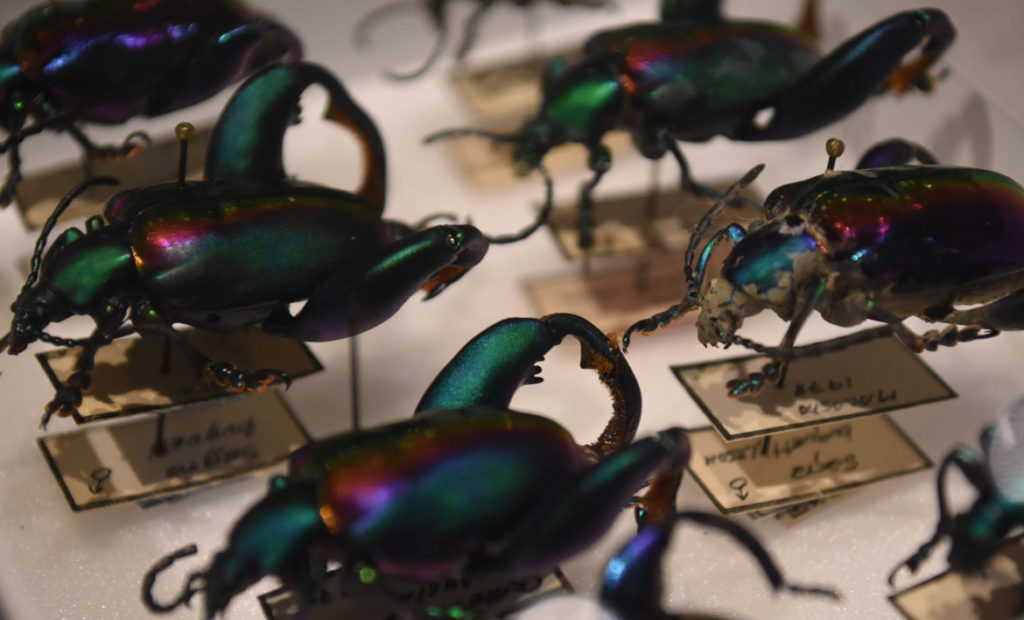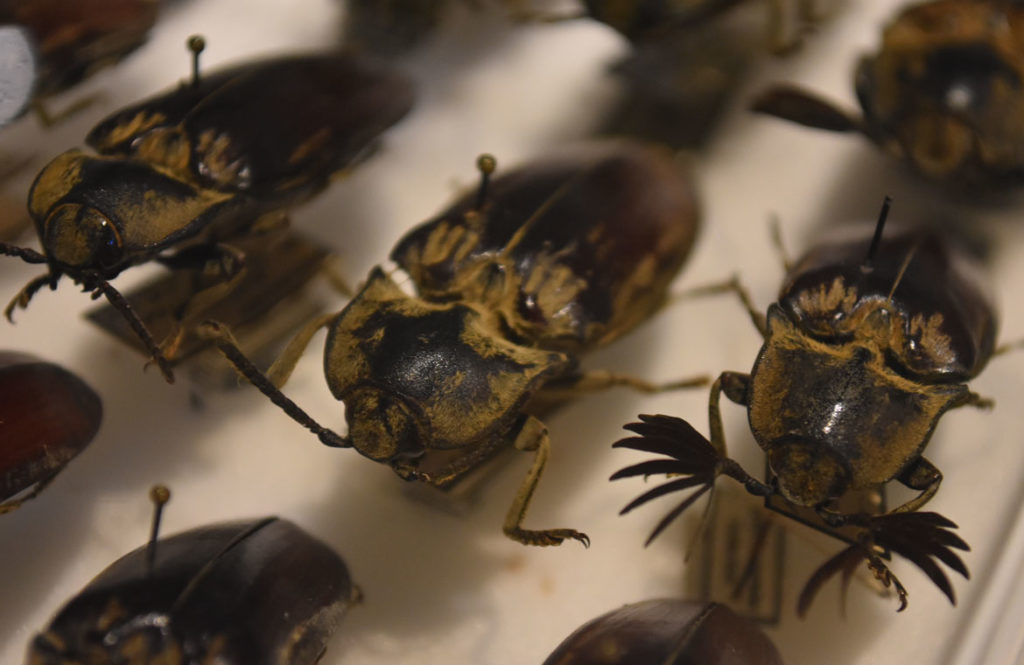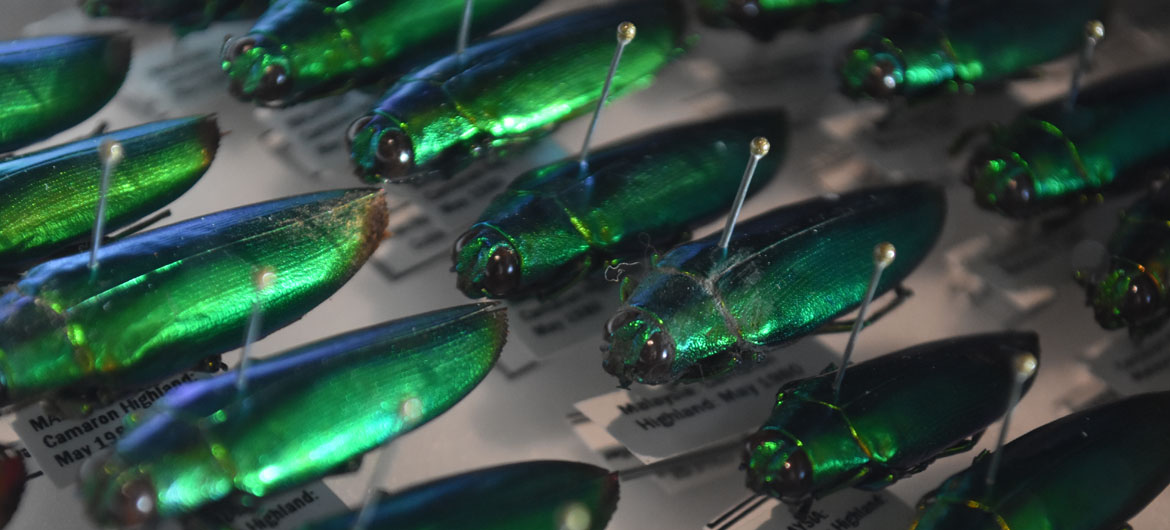The earth is home to 450,000 species of beetles, Brian Farrell, the Harvard University professor and curator of entomology, told me recently as he was pulling out drawers of the insects in the storage halls of Harvard’s Museum of Comparative Zoology in Cambridge. “That makes them the largest group of organisms on the planet. One out of every four animal species is a beetle.”
Farrell organized the Harvard Museum of Natural History’s new “The Rockefeller Beetles” exhibit, found in a corner of the museum’s “Arthropods: Creatures that Rule” gallery. It showcases hundreds of beetles selected from the 150,000 specimens representing 10,000 species that were donated to the museum last year by banker and philanthropist David Rockefeller (1915-2017)—grandson of oil baron John D. Rockefeller and one of the heirs to the fortune accumulated by the family’s oil, banking and real estate businesses.
The exhibit features rows and rows of shimmering emerald jewel beetles, bronze ground beetles, green and red frog leg beetles, and green scarab beetles decorated with pale yellow dots.
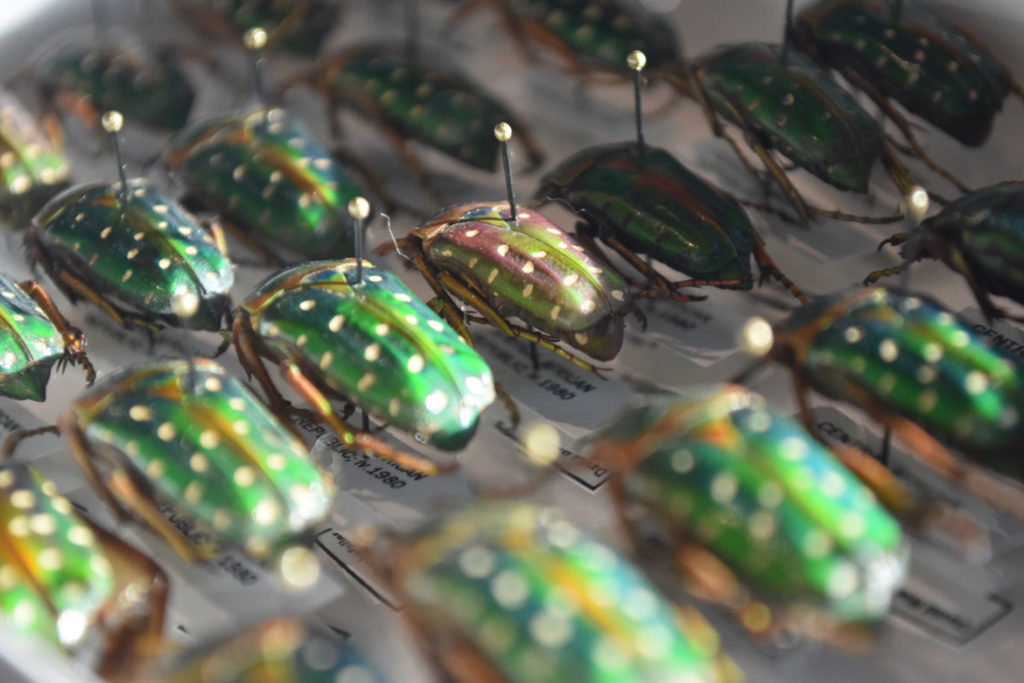
Help Wonderland keep producing our great coverage of local arts, cultures and activisms (and our great festivals) by contributing to Wonderland on Patreon. And sign up for our free, weekly newsletter so that you don’t miss any of our reporting.
“What you see as the shininess on their backs are their front wings,” Farrell explains. They’re composed of a hard chitin that shields their delicate wings inside, which “allows beetles to go where other animals can’t go because they have this protection for their wings.” So beetles can burrow underground or bore into trees. “That’s the one striking things about beetles that’s obvious once you say it, but that’s easily overlooked—this protective layer they’ve evolved.”
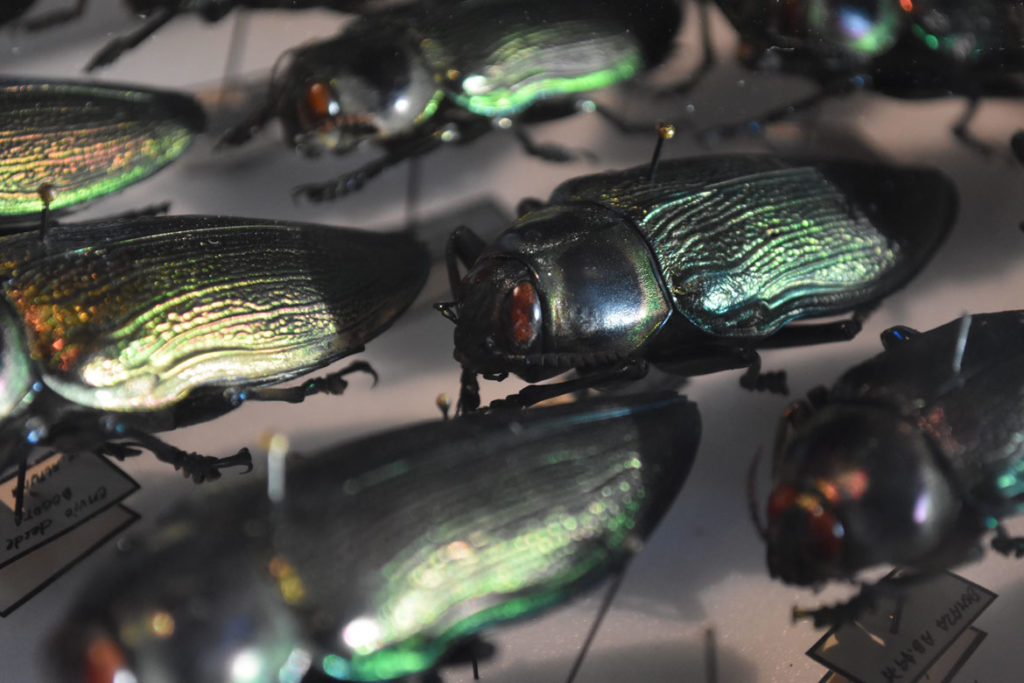
While Harvard University in the 1930s, David Rockefeller gave natural history walks while (mainly) studying economics. “He took graduate level entomology his first year and got an A,” Farrell says. “That was his only A at Harvard.” Rockefeller served as an intelligence officer in Algeria during World War II. “He did a lot of collecting there,” Farrell says. Rockefeller would go on to be president of Chase Manhattan Bank, in which the family owned a major stake.
Rockefeller collected beetles himself, planning expeditions to Asia, Africa, Costa Rica, and hired others to collect for him. “He would always have beetle collecting jars wherever he went,” Farrell says. Rockefeller bought specimens and traded, he purchased a major collection from Spain. “He had 75,000 when we met and by the time he passed away 20 years later it had doubled,” Farrell says. “It was his longest continued passion throughout his life.”
“He took insects as a lens into how the world works,” Farrell says, “especially on the natural history side.”
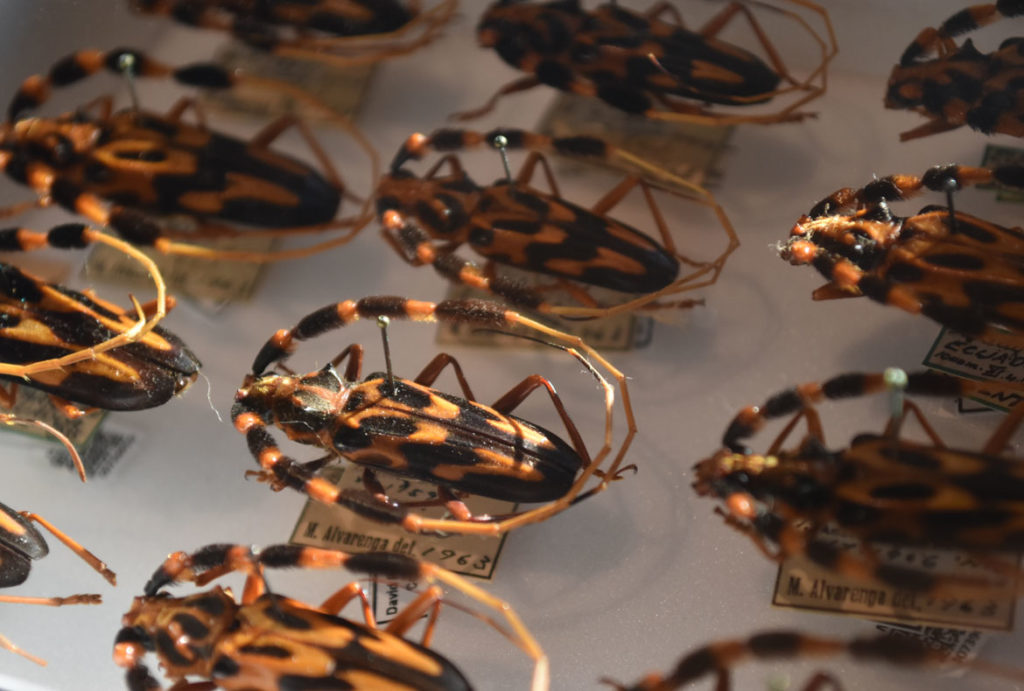
Harvard’s collection, Farrell says, includes “7.5 million insects and half of them are beetles. It’s the most important collection in North America. Not because of its size, but because of its age,” Farrell says. Harvard’s collection includes 14,000 beetle types. “Most of the beetle types were described in the 1800s and because we’re so old we have the original specimens.” In other words, Harvard has the very beetles—the individual dead bugs—that have come to define all these different types of beetles. “They’ll designate one or two specimens as the type. By definition these specimens belong to those species.”
Rockefeller’s collection, Ferrell says, “adds a series of specimens and species that we don’t have much representation from, especially Brazil and Africa. … Specimens you couldn’t collect today because of vanishing ecosystems or excessively complex permitting rules.”

Among Rockefeller’s rare specimens are tiger beetles. “They’re hard to catch because they have great big eyes and they can see you coming and their fast flyers,” Farrell says.
Farrell first met Rockefeller at his home near Tarrytown, New York, where he had cabinets in basement rooms filled with hundreds of boxes of beetles. A sign of Rockefeller’s seriousness as a beetle collector is that he had not just got one group—say, the colorful ones—but also “he has all the diversity of all the little brown jobs,” Farrell says. Thousands of them.
“The rarest things are the little tiny brown jobs,” Farrell tells me. “They’re not spectacular. They’re tiny, they’re hard to collect, and it’s hard to see what’s going on underground. … That’s really what most beetles are, most beetles are little brown jobs.”
Help Wonderland keep producing our great coverage of local arts, cultures and activisms (and our great festivals) by contributing to Wonderland on Patreon. And sign up for our free, weekly newsletter so that you don’t miss any of our reporting.


